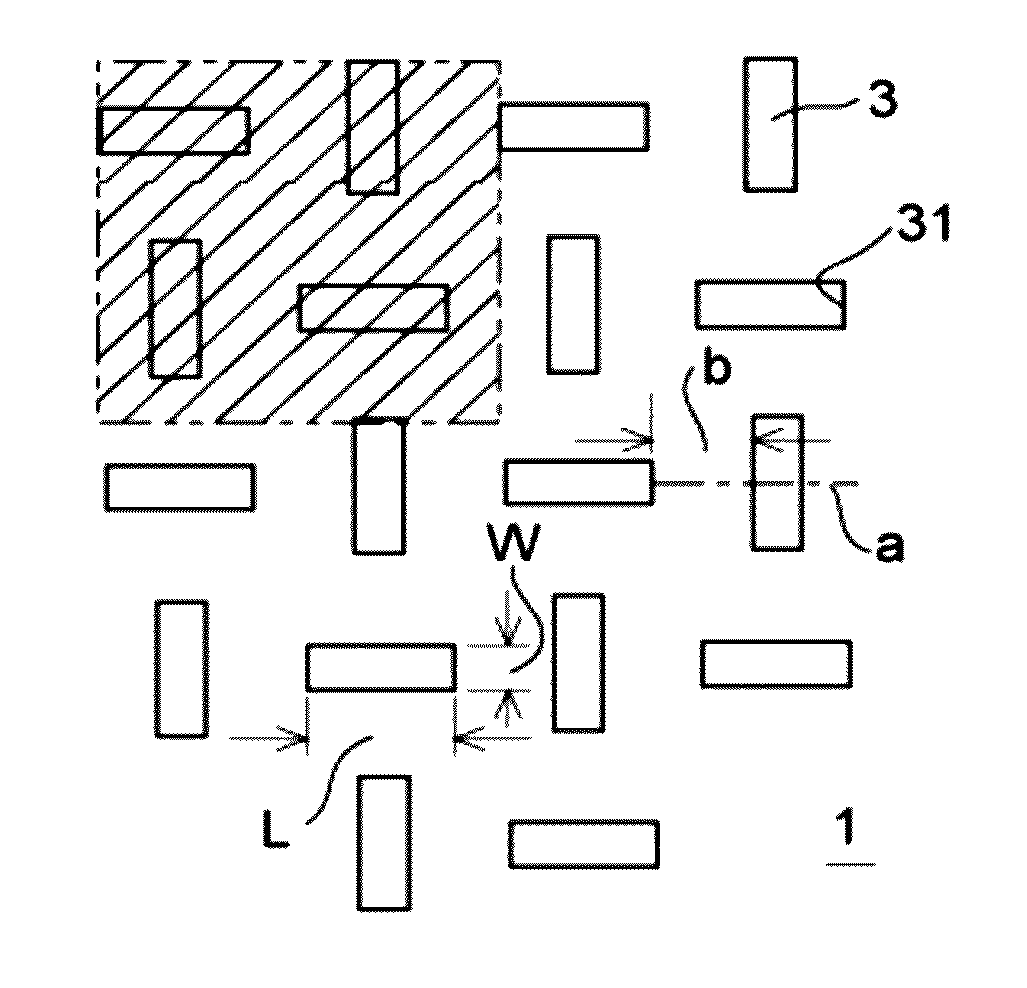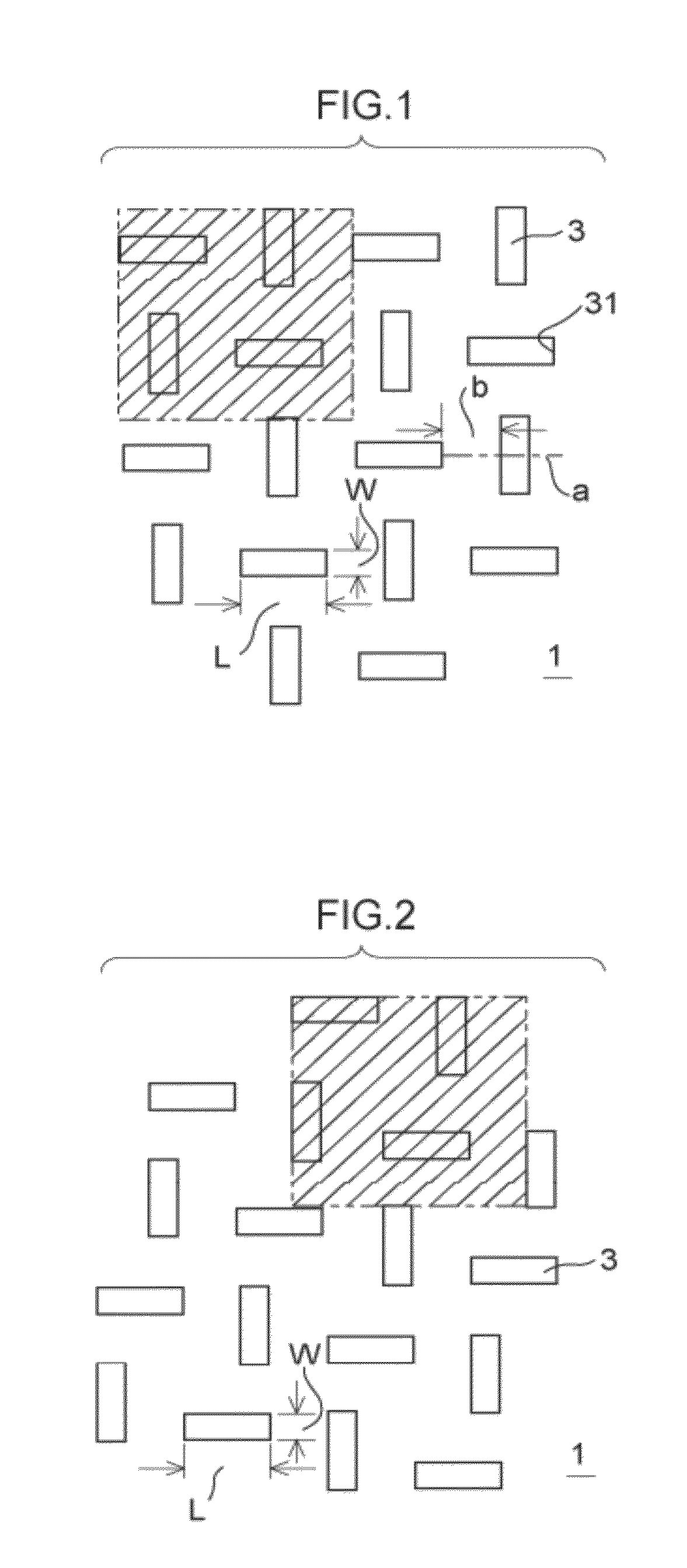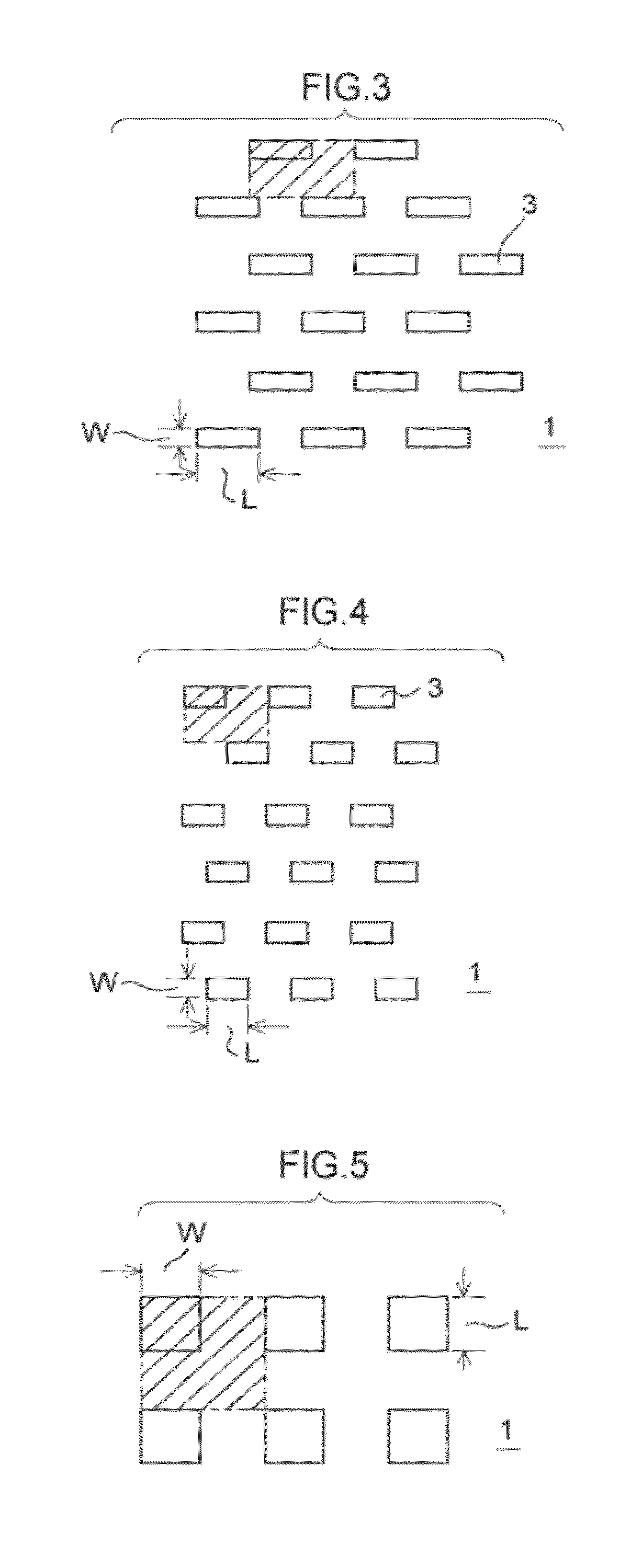Sieve, sifting device, solder balls, and method of sifting spherical particles
a spherical particle and sifting device technology, applied in the direction of solid separation, cleaning process and apparatus, cleaning using liquids, etc., can solve the problems of ineffective sifting of particles, constant oscillation, and clogging of holes, so as to increase the classification rate, the operation rate of the sieve may be enhanced, and the effect of increasing the classification ra
- Summary
- Abstract
- Description
- Claims
- Application Information
AI Technical Summary
Benefits of technology
Problems solved by technology
Method used
Image
Examples
first exemplary embodiment
[0070]As illustrated in FIG. 1, a plate-form sieve 1 of a sifting device relating to the present invention (the first exemplary embodiment) is fabricated of a metal, for example, nickel or a nickel alloy, and has long holes 3 with hole shapes that sift, for example, solder balls 2 illustrated in FIG. 6. The long holes 3 are plurally provided in the sieve 1 such that lines extending in the length directions thereof cross length direction midpoints a of others of the long holes 3. A spacing b of the long holes 3 is set to 3 times to 5 times a diameter x of the solder balls 2 to be classified, for example, 3 times, and length direction lengths L of the long holes 3 are set to 3 times the diameter x of the solder balls 2 to be classified. Further, a width W of the long holes 3 is set to equal the diameter x of the solder balls 2 to be classified
[0071]The diameter x of the solder balls 2 to be classified in the first exemplary embodiment is 67 μm. A thickness T1 of the sieve 1 is 35 μm.
[...
second exemplary embodiment
[0075]As illustrated in FIG. 2, the sieve 1 of a sifting device of the second exemplary embodiment has a structure that differs from the first exemplary embodiment in that the long holes 3 that are plurally provided in the sieve 1 are formed such that the lines extending in the length directions thereof are orthogonal to arbitrary positions in the length directions of others of the long holes 3.
[0076]Now, a method of fabricating the sieve 1 of the above-described first exemplary embodiment or second exemplary embodiment using electroforming is described on the basis of FIG. 6.
[0077]In the electroforming described below, generally, bringing holes closer to other holes is sufficient as a method for raising a hole opening ratio. In practice however, a result of neighboring holes being made denser and dividing walls therebetween becoming thinner is that strength of the sieve 1 falls and cannot withstand usage. Accordingly, if adjoining walls (the hole walls 31 of the long holes 3) are m...
PUM
 Login to View More
Login to View More Abstract
Description
Claims
Application Information
 Login to View More
Login to View More - R&D
- Intellectual Property
- Life Sciences
- Materials
- Tech Scout
- Unparalleled Data Quality
- Higher Quality Content
- 60% Fewer Hallucinations
Browse by: Latest US Patents, China's latest patents, Technical Efficacy Thesaurus, Application Domain, Technology Topic, Popular Technical Reports.
© 2025 PatSnap. All rights reserved.Legal|Privacy policy|Modern Slavery Act Transparency Statement|Sitemap|About US| Contact US: help@patsnap.com



